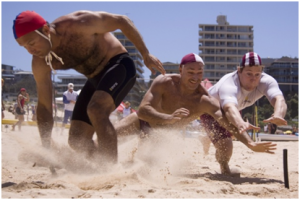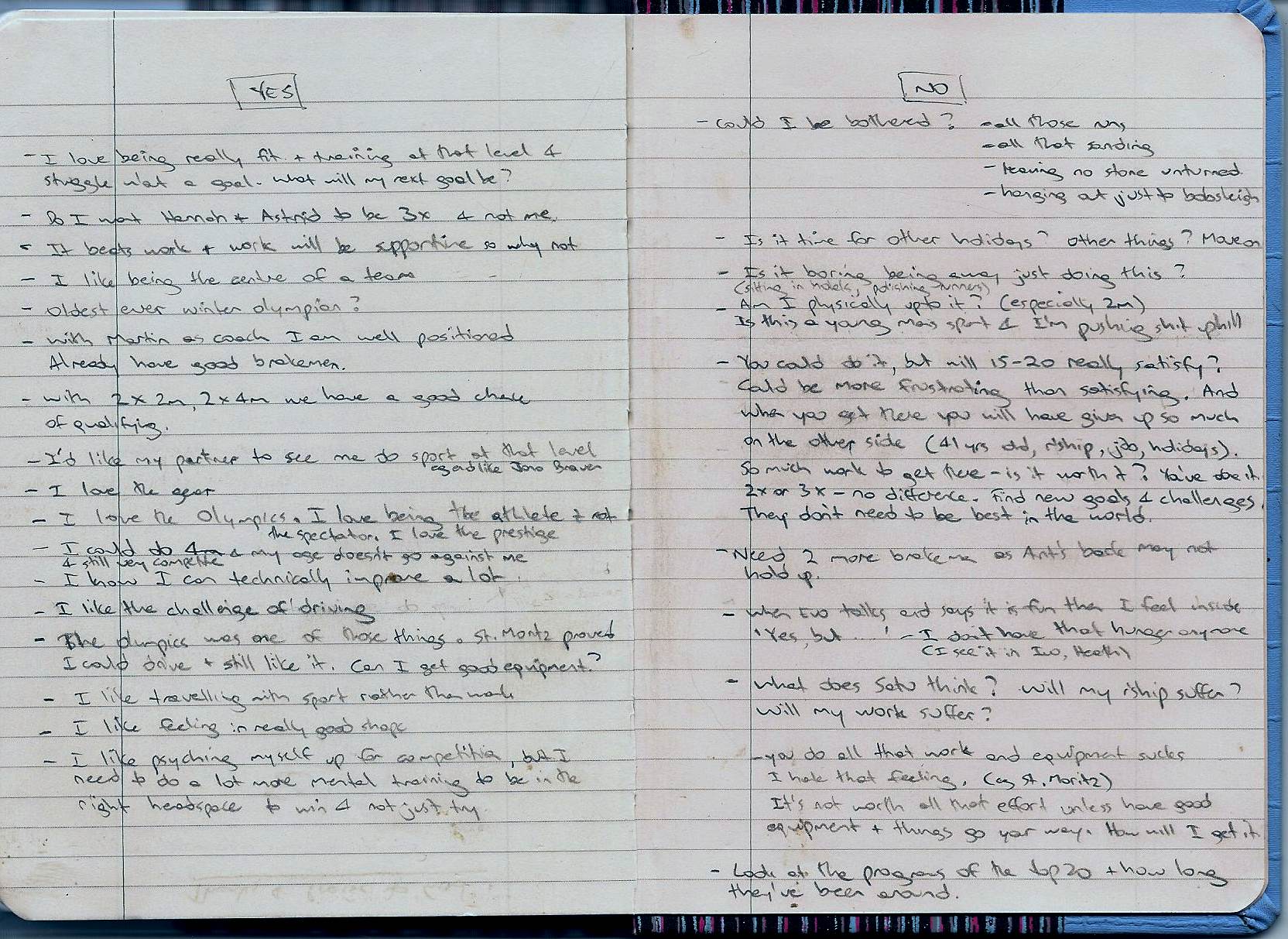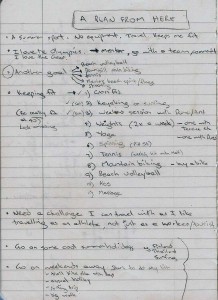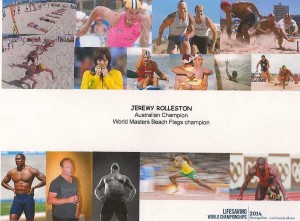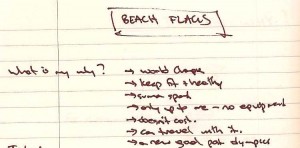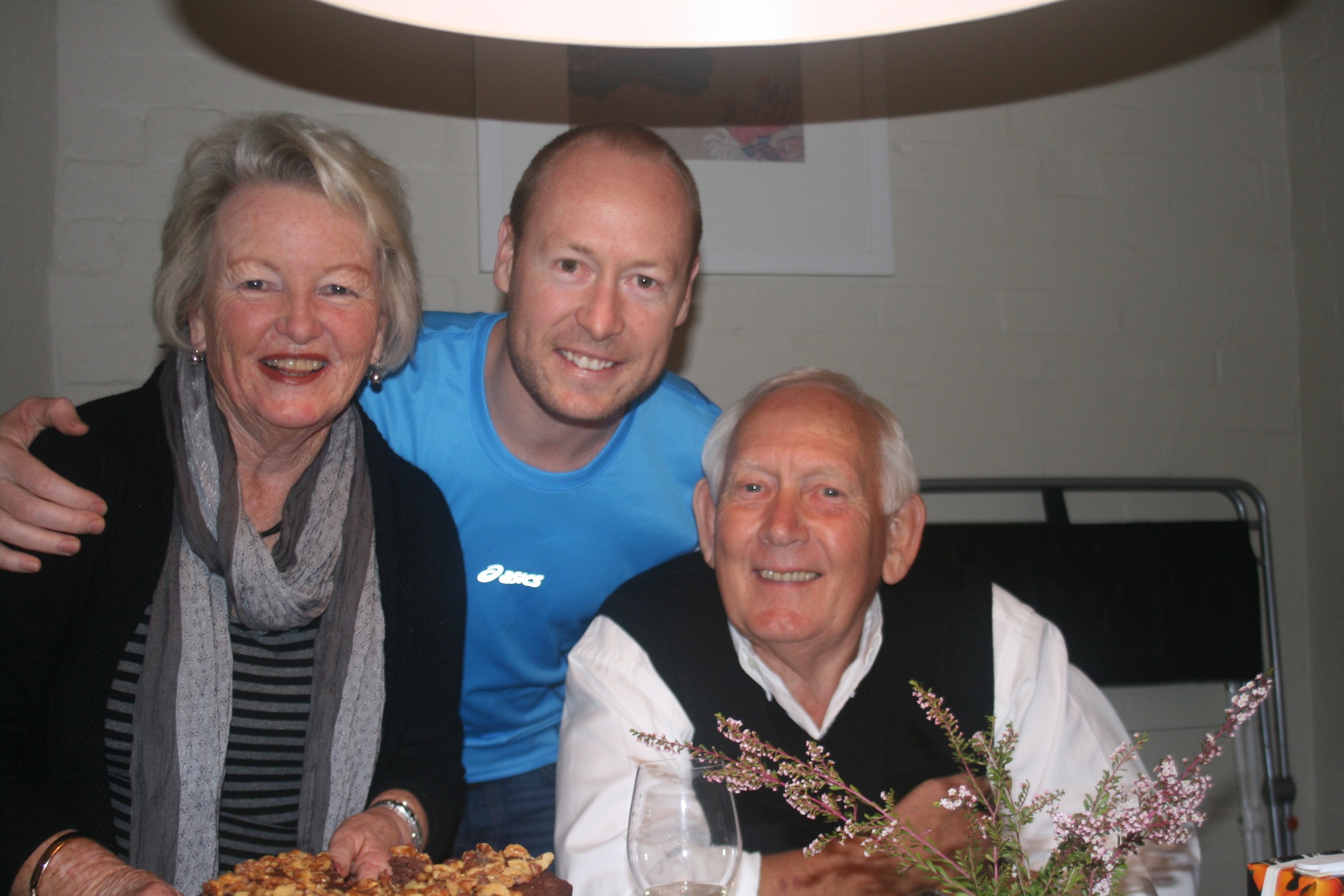The journey has begun … (Beach Flags – Part 1)
I was talking to a friend recently who had just read my book. He said that he would have loved to have seen even more detail on how I actually went after my goals. He liked how my book described the process and journey of chasing after a dream step-by-step. He liked the stories and examples and advice from the 10 incredible, successful and high-achieving contributors. He liked the psychology.
BUT, he wanted even more detail. What did I actually do as I journeyed towards competing in the Olympics. “Show me and tell me exactly” he said.
So Jesper, with that in mind, I thought I’d attempt to show you in a series of blogs over time, the exact and actual things I did and am doing along the journey to achieve my latest goal – to become the World Champion (40-45 years) in Surf Life-Saving Beach Flags in 2014. It may not be the Olympics, but I will hope to approach it with the same focus and strategy – even if the body isn’t what it used to be !!! So enjoy … and I trust this is interesting and helpful.
Step 1 – Find the Dream
I love travelling on planes as I often take my journal and have time to scribble and ponder, write and dream, plan and scheme. It is that precious time when no one can get me and I often find clarity and organisation. And a recent flight back from Switzerland was no exception. I had just retired from bobsleigh and was just finally finding peace around not needing to go on for another Olympics and moving on to other things. So I was writing everything down to get further clarity and also to help me find that next challenge and goal. I’m a goal-oriented person and I didn’t want to just waste away into post-sport boredom, with no new goal to give me purpose, to excite me, to keep me fit and to stretch me. I’ve learnt to love the stretch. So I started writing and scribbling. The result of that was that over time I came up with my new goal. Part of the dream of what life might look like post elite Olympic level sport. Here are my scribbles …
Step 2 – What is the big, bright and shiny goal ?
Remember, that you always need to have the big outcome goals. The thing you think about all the time that motivates you. The thing you can almost taste. That thing that is big, shiny and bright. Under those you then have your milestone goals – the smaller, systematic, more achievable goals that you will aim for and achieve (with hard work and strategy) along the way to your big outcome goal.
As I mentioned before, my latest goal that motivates and inspires me is to be the World Masters Beach Flags champion. This is a little collage I have in my training diary. It has the goal written on it as well as pictures that represent things to me. It is like a mini-vision Board for Beach Flags. To give me that extra little bit of motivation whenever I need it and keep the dream front and centre and vibrant.
Step 3 – What is my ‘Why’ ?
Remember in my book and workbook I talk about how ‘Knowing your Why’ is so important. It provides your purpose and once we define it, every action takes on a more definite meaning. Simply put, if you don’t know why you want to do something then why would you do it. And if the why isn’t strong enough then why will you keep going when the going gets tough ? If your ‘why’ is not stronger than what it will cost you and the sacrifice and commitment needed to achieve it then you’ll give up. For example, consider these two people. One makes a new year’s eve commitment to get fitter to feel better or another person who has just been told by the doctor that if they don’t lose weight they will dies and leave their family without a father. Which person’s motivation do you think is stronger ? Which person’s ‘why’ do you think is clearer ? A person without a ‘why’ is like a ship without a rudder. No matter how hard you attempt to sail the rudderless ship, it goes nowhere. It churns ineffectively, without direction.
Or put another way, remember that knowing your ‘why’ is a way of tapping into your deep motivation for why you’re doing what you’re doing. Of engaging the Limbic system which is a separate area of the brain that controls our base emotions – things like fear, anger, sex-drive, attraction. That is, it controls things that happen without us even being consciously aware of it. For example, if you’re embarrassed, you blush – without even thinking of it. Which proves that our emotions often drive us, without our ‘conscious’ more rational part of the brain even having an input. So when we tap into our ‘why’ we are engaging these deep, powerful, ‘unconscious’, emotional drivers. And these are way more powerful than just trying to use your conscious will. (After all, if our conscious will was so effective we wouldn’t need to keep making the same New Years resolutions would we !).
So what is my why ? What will it give me ? Why do I want to do beach flags and become World Masters champion ?
So there’s my first instalment. Stay tuned for more … I look forward to hearing your comments and feedback …

